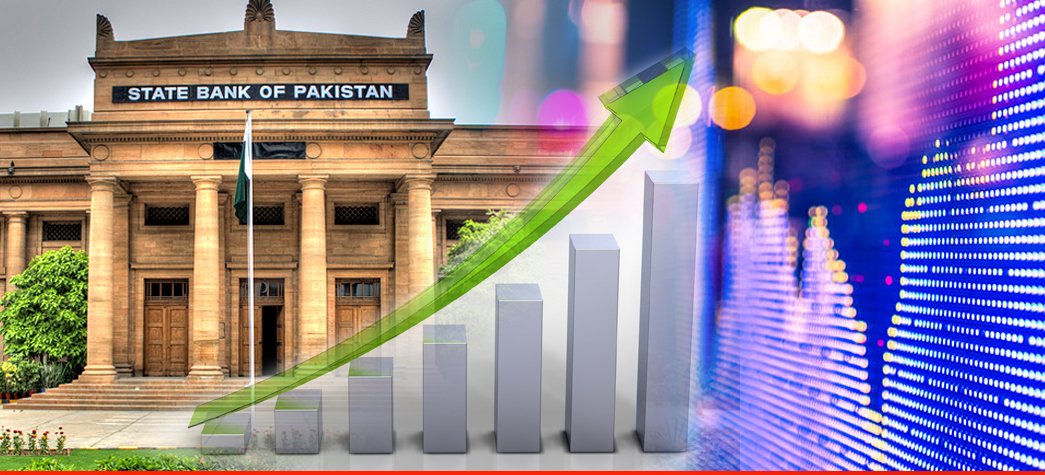EDITORIAL
On December 19, 2019, the UN General Assembly adopted resolution 74/245. It designated December 4 as the International Day of Banks to recognize the significant potential of multilateral and other international development banks. The banking sector is critical in financing sustainable development, providing know-how, and honoring the vital role of the banking systems in the Member States in improving the standard of living.
In September 2015, the General Assembly adopted the comprehensive, far-reaching, and people-centered set of universal and transformative Sustainable Development Goals and targets. It reaffirmed its commitment to working tirelessly to implement those goals by 2030. It recognized that eradicating poverty in all its forms and dimensions, including extreme poverty, is the greatest global challenge and an indispensable requirement for sustainable development. The goals seek to achieve sustainable growth in its three dimensions – economic, social, and environmental – in a balanced and integrated manner, building on the achievements of the Millennium Development Goals and addressing their unfinished business.
Given the complex and ambitious transformations needed to deliver on the 2030 Agenda, coherence across policy areas is critical. There is a growing understanding of how financial regulations affect incentives for sustainable development investment. There needs to be more understanding of the impacts of social and environmental risks on credit quality and the stability of the financial system. Policies and regulations must act together to create a sustainable financial system. The regulatory system needs to be congruent with the measures used to boost the sustainability of the private financial plan, such as sustainability reporting and impact measurement.
Well-run national development banks can help countries develop financing options for Sustainable Development Goal-related investments. Such banks should be aligned with the Goals holistically and be considered in integrated national financing frameworks. Collaboration between national development and multilateral banks through co-financing or on-lending arrangements can enhance Goal-related finance through the complementarity of global resources and local market knowledge.
While achieving the 2030 Agenda demands the maximization of synergies and the breaking down of silos, ensuring that financial and economic systems are coherent with sustainable development is critical, well-functioning national and regional development banks can play in financing sustainable development, particularly in credit market segments in which commercial banks are not fully engaged and where significant financing gaps exist, based on sound lending frameworks and compliance with appropriate social and environmental safeguards. It includes sustainable infrastructure, energy, agriculture, industrialization, science, technology, and innovation, as well as financial inclusion and financing of micro, small and medium-sized enterprises. National and regional development banks also play a valuable countercyclical role, especially during economic crises when private sector entities become highly risk-averse. We call upon national and regional development banks to expand their contributions in these areas and urge relevant international public and private actors to support such banks in developing countries.
Nonetheless, policymakers should note that financing policies work in collaboration. Integrated financing frameworks should respond to financing challenges and the realities of a changing global landscape. For example, to combat inequality, including gender inequalities, national policies must address the falling wage share, growing vulnerabilities, digitization and increasing market concentration, among other issues. Governments should revisit their labour market policies, social protection systems, fiscal policies, competition policies, trade policies and financial sector regulations and strategies to ensure that they are in line with the new realities.
The financial sector plays a fundamental role in the smooth functioning of an economy. It directs financial resources to the actual industry, helping capital formation and facilitating financial transactions. A sound and stable financial system is a prerequisite for economic development.
Pakistan’s financial sector consists of bank and non-bank financial intermediaries. The banking intermediaries include commercial banks, Islamic banks, specialized banks and micro-finance banks, while non-bank intermediaries include development finance institutions, non-bank financial institutions, and insurance companies. The financial sector’s overall assets amount to 75 per cent of the GDP as of December 31 2017. The State Bank of Pakistan (SBP) and the Securities and Exchange Commission of Pakistan (SECP) are the apex institutions regulating the financial system.
The banking sector assumes significant importance in the financial industry. It constitutes around 74 per cent of the financial sector’s assets and measures up to 55 per cent of GDP. As of March 31, 31 2018, 34 banks are operating in Pakistan, comprising five foreign banks, five public sector banks, four specialized banks and twenty domestic private banks. The branch network includes more than 16000 branches spread all across the country.
SBP ensures financial and macroeconomic stability through legal, regulatory, and supervisory frameworks. These frameworks are continuously updated to align with the best international practices. SBP’s legal framework that empowers it to regulate and supervise financial institutions comprises the SBP Act of 1956, the Banking Companies Ordinance of 1962, the Microfinance Institutions Ordinance of 2001, the Foreign Exchange Regulation Act of 1947 and various other laws.
The regulatory framework, on the other hand, includes a set of policies, guidelines, prudential standards and allied processes that cover licensing regimes, prudential regulations, corporate governance, capital adequacy regime, AML/CFT regime and market discipline.
Recently, SBP has revised the branch-licensing policy to focus on enhancing financial outreach to the under-banked areas. Moreover, new modes for banking businesses have been introduced, including Sales & Service Centers and Mobile Banking Units. The concept of a Digital branch has also evolved, and one such branch has been established at the Institute of Business Administration (IBA), Karachi, as a pilot project.
Besides licensing, SBP, through Prudential Regulations (PRs), prescribes minimum supervisory standards for financial institutions. PRs cover different areas, including Corporate / Commercial Banking, Small & Medium Enterprise Financing, Infrastructure Financing, Agricultural Financing, Micro Financing, Housing Financing and Consumer Financing. Further, the AML/CFT regime has also been aligned with FATF recommendations, while sanction regimes have been implemented to deny banking services to blocked entities/persons.
Intending to improve the corporate governance in banks, SBP has implemented a Fit & Proper Test (FPT) regime at the time of appointment of key executives of the banks and is continuously aligning it with the best international practices. The criteria for selecting independent directors have been revised to make their roles more effectively. The composition and function of sponsors/presiding officers of the banks/DFIs on the board’s committees have also been rationalized.
Moreover, SBP is guiding the banking sector on risk management issues. SBP has issued guidelines on interest rate risk management and compliance risk management. Moreover, new procedures on internal audit functions and revised policies on risk management and country risk are expected to be issued this year.
Identifying potential risks that could adversely impact the financial system-SBP relies on its supervisory framework consisting of Off-site Supervision, on-site assessment, Surveillance and Enforcement & Resolution. Off-site supervision involves a periodic appraisal of institutions based on CAELS (Capital, Asset Quality, Earnings, Liquidity and Sensitivity to other risks). To promote effective prudential conduct, SBP annually conducts prudential meetings with the Board of Directors, focusing on key risk areas. Apart from off-site activities, SBP conducts regular on-site assessments and thematic reviews on high-risk areas. Credit risk management, Corporate Governance, AML/CFT and controls remain the key focus of these examinations and inspections. In addition, technology risk has become the central focus area. Under the surveillance function, SBP monitors the liquidity positions of financial institutions and conducts stress testing. In contrast, the enforcement and resolution function demand SBP to take regulatory actions against those institutions that breach rules, regulations or instructions issued by it under various statutes.
In the post-global financial crisis regulatory environment, SBP has remained adaptive by strengthening its regulatory and supervisory frameworks. Within the supervisory landscape, regulators around the globe are gradually shifting their focus from compliance-based supervision to forward-looking risk-based supervision (RBS). SBP has also initiated work on migrating to RBS to advance its current supervisory regime and improve its supervisory efficiency. Further, SBP is designing and implementing a comprehensive macroprudential policy framework in the country to ensure financial stability. In this regard, establishing a Deposit Protection Corporation (DPC), a wholly owned subsidiary of SBP, is critical to strengthening the financial stability regime. Besides, SBP has set guiding principles for the financial industry to facilitate the development and implementation consumer protection framework.
The banking industry is also facing disruptions from rapid technological advancements. SBP has long recognized the importance of technology and has issued various guidelines encompassing frameworks for Enterprise Technology Governance and Risk Management, Payment Systems’ Designation, Security of Internet Banking, prevention against cyber-attack, Risk Management in Outsourcing Arrangements by Financial Institutions, etc.
It is pertinent to outline that payment systems are a critical part of financial infrastructure by assuming a facilitating role in financial intermediation. SBP, in this regard, is developing a National Payment System Strategy to modernize the clearing and settlement infrastructure to reduce cost, improve efficiency, enhance security, and strengthen its regulatory and supervisory oversight. SBP also facilitates the entrance of non-banks in the payments arena and has issued Rules for Payment System Operators and Service Providers.
Keeping in view the existing challenges and emerging trends, SBP has devised a comprehensive action plan, i.e. the SBP Vision 2020. The strategic goals outlined in the plan emphasize improving the banking system’s efficiency, effectiveness, and fairness and strengthening the overall financial stability regime to fulfill SBP’s mission of fostering a sound and dynamic economic system.
The banking industry is stable and progressing in Pakistan. Then, the role of SBP is critical as a regular. The banking industry is crucial for the growth of liquidity management, taxation and financial management.

















































